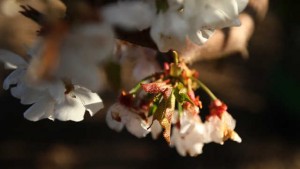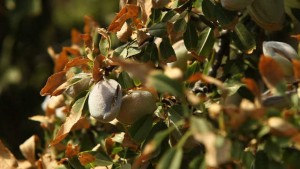Like what you see in the supermarket produce section? Enjoy, because things may be changing there – the prices, even the mix of available fruits, nuts and veggies. Long acknowledged as "the nation's salad bowl," California's farm belt is facing some thorny challenges from our changing climate: rising temperatures, an uncertain water supply and more abundant pests that threaten multi-billion-dollar crops. The half-hour documentary Heat and Harvest, a co-production of KQED and the Center for Investigative Reporting, examines these threats and some potential solutions.

The first story in the program, Uncool Cherries, looks at the challenges facing cherry growers near Stockton. Life is hardly a bowl of cherries if you're trying to grow them in California lately. Cherries and other major fruit crops need a certain number of "chilling hours" in order to produce healthy blossoms and fruit. But in recent years, the spring nights have brought warmer temperatures and less of the legendary Valley fog that helps keep the chill on. (Reporter: Mark Schapiro / Producer: Serene Fang)

The second story, Dry and Salted, examines the major wildcards in California's farming future: water and salt. Growers are having to learn to get along with less of the first and more of the second. That can mean leaving once-productive fields fallow or having to find less water-intensive crops and irrigation methods. But water quality is also presenting a challenge as growers find themselves having to cope with salt in their groundwater and the threat of encroaching saltwater from rising seas. (Reporter: Mark Schapiro / Producer: Serene Fang)

Heat and Harvest ends with Some Bugs Like it Hot: Climate Change and Agricultural Pests, a look at how climate change is making agricultural pests more abundant in the state’s fields. A tiny insect that didn’t used to pose a problem for California farmers is now transmitting a disease that damages potato chips and threatens the state’s tomato crop. Are more pesticides the answer? We talk to farmers and scientists to see what's being done to meet the challenge. (Producer: Gabriela Quirós / Program Host & Reporter: Craig Miller)
Play our water quiz and guess what California crop needs the most water.